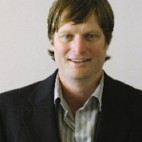For too long, industry has played lip service to energy efficiency, but with the onset of cutthroat competitiveness between industrial players, small-medium prolonged savings can make or break operations long term. To help guide industry though greater energy efficiency practice at the workplace, the Industrial Energy Efficiency (IEE) project was established in 2010 in response to the growing need to improve South Africa’s energy efficiency.
The United Nations Industrial Development Organization (UNIDO), along with the Swiss Secretariat for Economic Affairs, the UK Department of International Development and partnered by South Africa’s Departments of Trade and Industry and of Energy, embarked on a programme to address the global drive for greater energy efficiency.
The ultimate goal is to demonstrate the positive impact of energy management as a means of reducing carbon-dioxide emissions and to demonstrate the effectiveness and financial impact of in-plant energy management. The project is hosted by the National Cleaner Production Centre of South Africa (NCPC-SA) at the CSIR, and to find out more, Gregory Simpson caught up with knowledgeable National Project Manager for the IEE, Alf Hartzenberg.
Hartzenberg, who holds diplomas in Textiles, Production Management, Business Administration and Financial Management, has almost 40 years of industry experience, studied civil engineering at the Univeristy of Cape Town (UCT). He is also one of five UN EU Green Flower Ecolabel trainers in South Africa.
Six years into the IEE project, what are some of the highlights and thus far?
Six years after we launched in 2010 we have had many highlights and have, in fact, been guilty of having our heads so deep into driving and achieving and chasing targets and outcomes, that at times we have neglected to sit back and just reflect on what we’ve really achieved. In terms of the numbers, the savings were quite phenomenal: 1.2 terawatt hours and 1 200 gigawatt hours are quite significant and the equivalent greenhouse gas emission reduction saved a huge amount of money: R1.8 billion saved in energy spend.
But those are the numbers. Beyond that, what was certainly fulfilling and a highlight for me was the formation of a more vibrant energy services sector. Through the work we did we fostered and promoted energy services as a more meaningful option to young graduates and to experienced practitioners in the field of energy, as there was a lack of understanding in the industry. This is evidenced by the number of expert consultants we had in the NCPC five years ago when I joined, we had a group of no more than 13. Today we have a group of experts, in excess of 120, that we can draw on to undertake our assessments and to provide technical assistance. So that, in a very small microcosm, is reflective of what I see in the broader market out there. It’s not all been great, we’ve had our failures. We’ve had some spectacular failures. We’ve worked with very large corporates in South Africa, large energy users that through a lack of internal commitment from top management have failed dismally in driving the sustainability of the energy management systems we’ve implemented. Companies that were really set to do well lost all the advantages gained through our implementation and virtually went back to square one because of the loss of some critical and key elements.
That’s one of the barriers to energy management systems and energy efficiency, not only in South Africa but globally, in that the technical knowledge resides with one or two individuals in the company and it’s not broadened. When you don’t have top management commitment, that becomes one of your big challenges.
I have seen companies develop energy management systems in a style, and in a language, and in a manner, that was peculiar to their needs and their conversation and their business. There was a company that identified trust as the essential ingredient on which to build an energy management system. They did not proceed until they had that established a level of trust between the top management, the employer, the owners and the workers in the company, and that’s quite amazing.
Others have taken slightly different routes, but all of this speaks to looking at how, within your company, you can get somebody to understand why he has to switch off an idle machine not producing anything; switch the light off in a common area; why he has to be aware of how his or her actions impact on energy consumption and how that, in turn, impacts on the tenure of their job and job security. Once you can start to achieve that level of appreciation and buy-in, then you are pretty well set to really achieve great things.
Sector by sector, which areas really need the most improvement in terms of their energy usage and who is doing best?
When we started, we identified what we thought were the five energy intensive sectors in South Africa. We looked at agri-processing, automotives, mining, chemicals, liquid fuels and we looked at iron and steel. And yes, they are large users. Very soon we discovered that those are not all, there were other sectors that needed as much help. We very quickly adopted the attitude that we would rather be more inclusive than exclusive, so we started to look at other sectors: pulp and paper; clothing, footwear, textiles and leather; and we expanded that into commercial sectors like data centres, warehouses and commercial buildings.
We have found that some of the biggest savings we have recorded to date in the public have come out of the non-metallic mineral sector, like cement and lime, the iron and steel sector and the automotive sector. This was because they are not only the largest users of energy but they were facing some serious global competition.
In terms of the iron and steel sector, they were facing softer global iron and steel prices and they were even facing dumping by China in South Africa. So a lot of them were at risk of closing down, in fact one of our flagship companies faced that very real scenario in 2011. A lot of the automotive companies are under pressure to improve their energy performance, relative to other automotive sites globally, but they are not competing with each other in South Africa. Toyota does not compete with Volkswagen. Volkswagen Uitenhage will compete with other Volkswagen sites in Africa and south east Asia and South America. So it’s ultimately driving the focus on reducing the energy content per car producer. We had seen Toyota, by implementing one of our energy management systems, go from being the worst energy plant globally to being in the top three in the world today,.
What uptake do you get from the rank and file and management when you come in with these new ideas?
It’s more a case of what are we prepared to accept than what they are willing to do with us. One of the lessons learnt over the first six years was the lip service paid to top management commitment. They would come along and say we support this, they would sign off on the energy policy and they would believe that they have concluded their task and that they could wipe their hands and move on. This is not that kind of commitment, this needs a lot more than signing an energy policy.
The environment is obviously a big talking point, what sort of carbon footprint reductions have you seen?
When I talk to the cynics and the tree huggers about the environment they always poke and joke at us, but I am starting to discern an attitude change, albeit small at this stage. In South African business, where it’s not only about driving profits, it’s now looking at triple bottom line, looking at the pattern of the environment and the people within the business. As part of the UNIDA programme, it’s very important that we equally foster the interest of women, so gender mainstreaming, gender equality, is a very strong focus in what we’re doing in Phase 2, and that we drive initiatives that will promote poverty alleviation.
And, in comparison to the other 16 countries involved in this project, how are we doing?
South Africa, by virtue of the fact that our government is proactive and they need to be commended for that, is the first country to have adopted the project. South Africa is also, and may still be, the only country today among those other 16 that have adopted and launched the full range of services within the IEE project. In a big way South Africa is seen as a big brother to them. In fact, the exchange, discussions, communication and engagement between project management units in other countries is starting to increase. This became evident to me when I was invited to share and present South Africa’s achievements and performance to date in the IEE project in Vienna in May this year. We have clearly matured in many instances and have moved beyond the mantel of the UNIDA support and started to effect greater customisation.
We have also learnt from them – there are certainly great lessons to be learnt from what is being done in Indonesia and Iran and I look at lessons learnt in Moldova and Ecuador. South Africa has taken a role within the community of IEE operation countries, with regard to implementing this project theme, of almost a big brother, even to Russia and the Ukraine and some of the larger countries within that group. I can very proudly say that we are starting to add great value to the programme.
When we started this programme in South Africa in 2010, more than 95% of our trainers were international specialists, best practice specialists from Europe and America who had worked in similar programmes in the preceding ten years. Today, we have 90% South African trainers delivering, AND we have eight South Africans who are training in other countries. Clearly we have demonstrated to UNIDA that South Africa has not only learnt quickly but matured to a level where we can, as equals, present training in the Philippines, Malaysia, Iran, Egypt, Vietnam and Indonesia.
How do we foster more energy efficient studies at our universities?
It’s a challenge that we embraced mid-term through the first phase of the project. We started to look at some of the universities, the premier universities in South Africa. Stellenbosch University showed great interest, and they looked at and considered offering postgraduate engineering and science modules in energy management systems optimisation and energy systems optimisation. It didn’t get far.
We engaged with, among others, UCT and a few other universities but that didn’t get far either. We’ve been talking to the University of Pretoria, University of Johannesburg and more recently we’ve engaged the Mangosuthu University of Technology in KwaZulu-Natal and they have made probably the most serious overture and commitment to introduce postgraduate courses or even undergraduate courses within their institution, and that is a good start.
We have engaged the UCT Energy Research Centre with a lot of our energy systems training during their Masters programme, but I don’t think we’ve nearly done enough. We need to step into high schools and offer energy as a career choice for a lot of young Grade 12’s, and instil a greater sense of awareness of the importance of energy efficiency, not only in the workplace, but also in the home.
So that is one area where I believe Phase 2 will challenge us to do more. In one of our components in phase 2 we speak about what we see as bridging training at TVET (Technical and Vocational Education and Training) Colleges. We take young graduates from these Colleges and offer them a bridging course that will render them eligible to enter our expert training programme – so that’s a start.
Energy efficiency has often been referred to as the first fuel, how would you respond to that?
The study was initially conducted by the American Council for an Energy Efficient Economy (ACEEE), and it was largely done by comparing the cost of power. They looked at the cost of power for renewables, wind power generation, PD solar, bio-mass, they looked at nuclear, coal and fuel oils and the prices generally range from about 8 to 12 US cents per kilowatt hour. Energy efficiency compared to that was set at 3 US cents per kilowatt hour, so if you can change the way you look at energy efficiency or you look at energy efficiency in a way that reduces the need to expand the amount of power generation or power stations South Africa needs, then we can achieve that significantly cheaper.
I speak to a lot of experts in renewable energy and the plea to them is essentially this: we support what you’re doing, in fact we buy-in to what you’re doing so strongly that we will lose some of that on sales in Phase 2, but before you go out and look at the sexy renewable energy technologies consider the importance of the very boring energy efficiency improvements that you need to undertake. The boring refers to existing technologies, improving the day-to-day operations of those equipment processes within the plant and driving down kilowatt hours. Once you’ve achieved that, once you’ve achieved a great measure of success in doing so then consider the renewable energy, but as a first fuel energy efficiency remains not only the most cost effective but also the most logical first step to looking at ways of improving your primary sources.
And the “internet of things” is a big buzzword, how can that improve energy efficiency moving forward?
I was amazed by the amount of budget being earmarked to the internet of things, almost a trillion dollars. Incredibly large funding, but there’s no doubt that when we start looking at the impact that smart grids may have on the ability to manage energy, to shift energy, so that we operate within what we have and what is available in South Africa, I believe that that plays a big role. At first Jeremy Rifkin’s: Third Industrial Revolution sounded quite strange when it spoke about collaborative power compared to what we hear being said today. In a recent conference in Cape Town, one of the leaders in this area tabled a proposal for a very different structure in South Africa, removing from Eskom some of the current responsibilities and power it has and investing that in the public sector who would be able to deliver more efficiently and more speedily on the needs within the national economy.
So the discussions seem to have started, be it is very early. We are starting to see some thought-provoking ideas and concepts on how we can evolve this economy of ours from this monolithic generator and supplier of electricity in South Africa to one that’s more distributor orientated. At this stage that may be a few bridges ahead in terms of where we are, but clearly the conversation is getting louder.










